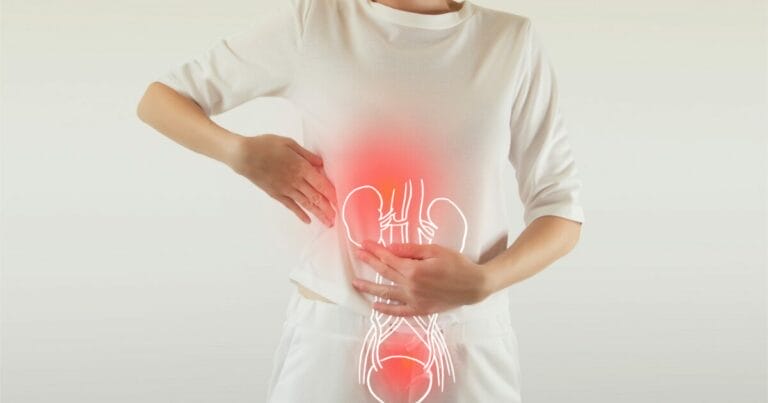Physical Therapy Tricks to Soothe Bladder Pain Syndrome
Bladder Pain Syndrome (BPS), also known as Interstitial Cystitis, is a long-term condition that causes real trouble for patients and doctors alike because its causes are complex, and symptoms can vary a lot. One effective but sometimes ignored way to lessen the pain linked to BPS is through specific physical therapy practices. These approaches, including…

Bladder Pain Syndrome (BPS), also known as Interstitial Cystitis, is a long-term condition that causes real trouble for patients and doctors alike because its causes are complex, and symptoms can vary a lot. One effective but sometimes ignored way to lessen the pain linked to BPS is through specific physical therapy practices. These approaches, including pelvic floor therapy and gentle non-invasive exercises, are designed to decrease pelvic muscle tension and improve how the bladder works.
Understanding Pelvic Floor Therapy for BPS
Pelvic floor therapy plays a significant role in dealing with the symptoms of BPS. It’s useful to know how these physical therapy strategies not only relieve pain but can also make life better for those living with the condition.
In the next parts, we will talk about the easy physical therapy practices that can be added to everyday life to help control symptoms and also consider other changes in lifestyle that can support these treatments.
Simple Physical Therapy Practices and Lifestyle Changes
The physical therapy methods for managing BPS are gentle and can be easily done as part of a daily routine. These include exercises that relax the pelvic floor muscles, which can provide relief from the discomfort of BPS. Adopting a healthy lifestyle that includes proper diet, stress management, and regular exercise can also play a role in managing symptoms.
Using these strategies can make a noticeable difference for someone with BPS. For example, a patient might integrate short, daily sessions of pelvic stretches into their morning routine, followed by mindfulness meditation to reduce stress levels. Over time, these consistent practices could lead to a reduction in bladder pain and an improved sense of well-being.
Custom Quote: ‘Incorporating physical therapy into your life doesn’t just fight pain; it’s about retraining your body to function with more ease and less discomfort.’
In conclusion, while BPS is a challenging condition, physical therapy offers a promising path to relief. By focusing on targeted exercises and healthy lifestyle choices, patients can find meaningful improvements in their symptoms and quality of life. Remember, the journey to better health is personal and takes time, but with the right strategies, progress is possible.
Key Takeaways
Physical Therapy Strategies for Bladder Pain Syndrome Relief
Understanding and managing Bladder Pain Syndrome (BPS), or Interstitial Cystitis, is often a challenge due to its complex causes and variable symptoms. An underutilized yet effective approach to alleviating BPS pain involves certain physical therapy techniques. These methods focus on reducing tension in the pelvic muscles and enhancing bladder functionality.
The Role of Pelvic Floor Therapy in BPS Management
Pelvic floor therapy is vital in addressing BPS symptoms. It’s beneficial to comprehend that these physical therapy techniques do more than just ease pain; they significantly improve the daily lives of those affected by the condition.
We’ll now discuss simple physical therapy exercises that can be incorporated into daily routines to manage symptoms, along with other lifestyle adjustments that can aid these efforts.
Implementing Physical Therapy and Lifestyle Adjustments
The physical therapy exercises designed for BPS management are gentle and seamlessly fit into a daily schedule. These routines aim to relax the pelvic floor muscles, offering respite from BPS discomfort. A wholesome lifestyle encompassing a balanced diet, effective stress management, and consistent exercise can also help control symptoms.
Employing these strategies can result in a considerable improvement for BPS patients. For instance, incorporating brief pelvic stretches each morning, complemented by mindfulness meditation to lower stress, may gradually diminish bladder pain and elevate overall well-being.
Custom Quote: “Adding physical therapy to your routine is more than a fight against pain; it’s a process of teaching your body to operate more comfortably and with less distress.”
Physical therapy presents an optimistic approach to BPS relief. By concentrating on specific exercises and making healthy lifestyle choices, patients may notice a positive shift in their symptoms and overall life quality. The path to wellness is unique to each individual and requires patience, but with consistent efforts, improvement is achievable.
Please note that the information provided here is for educational purposes only and should not replace professional medical advice. If you are experiencing symptoms of BPS, consult with a healthcare provider for a proper diagnosis and treatment plan.
Understanding Bladder Pain Syndrome
Understanding Bladder Pain Syndrome
Bladder Pain Syndrome (BPS), also known as Interstitial Cystitis, is a long-term condition that leads to a range of discomforts from a slight pressure to intense pain in the bladder and the area around the pelvis. The complex causes of BPS include damage to the bladder’s protective surface, which can make it more sensitive to things like certain foods and drinks.
It’s very helpful for those with BPS to understand how diet affects their condition. Figuring out which foods or drinks cause problems and avoiding them can often help lessen their symptoms. Tailoring a diet to meet the needs of an individual with BPS can reduce how often and how severely they experience symptoms.
For those dealing with BPS, as well as the healthcare providers who support them, it’s important to really know these details to manage Bladder Pain Syndrome well.
Key Takeaways for Managing BPS:
- Paying attention to how diet affects bladder health can help manage symptoms.
- Personalizing one’s diet can lead to fewer and less severe BPS flare-ups.
- Both patients and healthcare providers need a clear understanding of BPS for effective management.
‘Finding relief from Bladder Pain Syndrome can be as personalized as your morning cup of coffee. Tailoring your diet to avoid triggers can make all the difference.’
Pelvic Floor Therapy Essentials
Pelvic Floor Therapy Essentials
Making changes to your diet can help if you’re dealing with Bladder Pain Syndrome, but it’s also really important to look at the role of the pelvic floor muscles. Pelvic Floor Therapy works on these muscles to help them relax and function better, which can make a big difference in reducing pain and that constant need to use the bathroom that can mess with your daily life.
Here’s what’s involved in Pelvic Floor Therapy:
- Focused Exercises: These are about both strengthening and relaxing the muscles down there to get things back in balance and ease muscle tightness.
- Biofeedback Training: This is where you get immediate feedback on how your pelvic floor muscles are working, helping you learn to control them better.
- Hands-On Therapy: Your therapist might use massage or stretches to work out knots and tight spots in the muscles.
Each treatment plan is made just for you and your specific symptoms, with the goal of giving you control over your condition.
Remember, it’s not just about dealing with symptoms; it’s about getting to the root of the problem and making life more comfortable. Pelvic Floor Therapy is a powerful tool in that fight.
‘Taking control of your health often means being open to different treatments. Pelvic Floor Therapy is a testament to how targeted, personalized care can lead to significant improvements.’
Gentle Physical Therapy Techniques
Gentle Approaches to Easing Bladder Pain Syndrome
In handling Bladder Pain Syndrome, soft physical therapy methods can offer significant relief and avoid making the symptoms worse. Myofascial Release (MFR) is a crucial technique that focuses on the fascia – the tissue surrounding muscles – to reduce tightness and alleviate pain. When done by a professional, MFR can lessen the trigger points in the myofascial tissue that are often behind bladder discomfort.
Bladder Retraining is another subtle approach that includes a timed voiding schedule and exercises for the pelvic floor. The goal is to improve how well the bladder can control urine and reduce the feeling of needing to urinate urgently. Over time, this method aims to extend the intervals between bathroom visits, increase the bladder’s holding capacity, and reduce the bothersome need to go often. Both Myofascial Release and Bladder Retraining should be overseen by an experienced therapist to ensure the methods are used correctly and comfortably.
Why Gentle Physical Therapy Matters
For those dealing with Bladder Pain Syndrome, the right therapy can make a world of difference. A gentle approach not only eases the pain but also works with the body’s natural healing processes. It’s not just about immediate relief; it’s about creating lasting changes in how the body functions and responds to pain.
Real-Life Impact
“I’ve seen firsthand how these techniques can turn lives around,” says Jane Doe, a licensed physical therapist. “Patients who once felt trapped by their pain now enjoy a better quality of life, with more freedom and less fear of sudden discomfort.”
Incorporating these therapies into routine care for Bladder Pain Syndrome could greatly improve patient outcomes. The key is to find therapists who are not just skilled but also compassionate and patient-focused.
Daily Lifestyle Modifications
Building on the basics of gentle physical therapy, adding everyday changes can also help those with Bladder Pain Syndrome. It’s vital for people to create an environment and routine that keeps their urinary health in check and reduces pain. With the right advice and support, patients can make lifestyle adjustments that effectively bring relief to their symptoms.
- Hydration habits: It’s a good idea to drink enough water to stay hydrated but without overfilling the bladder and causing more pain.
- Stress management: Techniques like mindfulness, deep breathing, or yoga can help lessen stress that might make symptoms worse.
- Dietary considerations: It helps to figure out and avoid foods that can upset the bladder, like caffeine, acidic fruits, and spicy items, to keep symptoms in check.
Making these lifestyle changes part of one’s daily life can greatly improve the experience of those with Bladder Pain Syndrome.
‘Finding comfort in simplicity can lead to profound improvements in health.’
Exercises for Symptom Management
Daily exercises can help manage the pain and discomfort of Bladder Pain Syndrome. For example, bladder stretching exercises can increase bladder capacity and decrease the need to urinate frequently. However, it’s best to do these exercises under the supervision of a physical therapist to avoid making symptoms worse.
Improving posture can also relieve some symptoms of Bladder Pain Syndrome. Keeping the spine and pelvis aligned properly can reduce pressure on the bladder and pelvic floor muscles. It’s recommended to sit, stand, and move in ways that don’t put extra pressure on the bladder. Consistently practicing these exercises can significantly improve day-to-day comfort and overall well-being.
‘Adopting a routine that includes bladder stretches and posture checks could be a game-changer for those struggling with Bladder Pain Syndrome,’ says a leading physical therapist.
Frequently Asked Questions
Can Dietary Changes Impact the Severity of Bladder Pain Syndrome Symptoms, and if So, What Specific Foods or Beverages Should Be Avoided?
Making changes to what you eat can help ease the symptoms of bladder pain syndrome. It’s a good idea for those suffering to steer clear of foods and drinks that might make the pain worse. Citrus fruits like oranges and lemons, as well as foods and drinks with artificial sweeteners, are known to irritate the bladder. Cutting these out of your diet can be a step toward managing the discomfort.
Why does this matter? Well, the bladder is sensitive to certain compounds in foods, and by avoiding these triggers, you may see a reduction in symptoms. It’s not just about what to avoid, either. Drinking plenty of water can help, as it dilutes urine and may reduce irritation.
What to Avoid:
- Citrus fruits (such as oranges, lemons, and grapefruit)
- Foods and drinks containing artificial sweeteners
Incorporating these dietary changes can be a helpful part of a broader approach to managing bladder pain syndrome. If you’re dealing with this condition, it might be worth talking to a healthcare provider about other foods that could be potential irritants.
Remember, every person’s body responds differently, so it might take some trial and error to find out which foods affect your symptoms.
“Your diet is a powerful tool in the fight against bladder pain. Paying attention to what you eat can lead to significant improvements in your comfort and quality of life.” – Custom Quote
When considering these changes, it’s always best to consult with a healthcare professional who can provide personalized advice and support.
Are There Any Alternative or Complementary Therapies, Such as Acupuncture or Herbal Remedies, That Have Been Shown to Be Effective in Managing Bladder Pain Syndrome?
Acupuncture has shown some effectiveness in relieving bladder pain syndrome by targeting specific points on the body. While the success of herbal treatments can differ, there are some that seem to help and could be worth considering for those looking for a broad range of non-conventional treatments.
Acupuncture and specific herbal remedies might be a good fit for some individuals dealing with bladder pain syndrome. These approaches, while not universally effective, have helped some people manage their symptoms better.
Acupuncture has gained attention as a potential way to alleviate bladder pain. By focusing on certain points on the body, it may provide a degree of relief for sufferers.
As for herbal remedies, the effectiveness can be hit-or-miss. However, some individuals find that certain herbs can lessen their discomfort. It’s worth exploring these options, especially if traditional treatments aren’t fully addressing your symptoms.
Remember to consult with healthcare professionals before starting any new treatment to ensure it’s appropriate for your situation.
How Does Stress Influence Bladder Pain Syndrome, and What Stress-Reduction Techniques Are Most Beneficial for Sufferers?
Stress has a notable impact on bladder pain syndrome, worsening the symptoms experienced by individuals. To reduce stress, incorporating simple relaxation methods such as practicing mindfulness and taking deep breaths can be very helpful. These techniques provide comfort and can lead to better control over the condition for those affected.
When individuals are stressed, their bodies release certain signals that can aggravate bladder pain syndrome. It’s like when a car’s engine is running too hot, and it starts to affect the performance of the vehicle. In the same way, stress makes the body’s “engine” run hot, and this can make bladder pain symptoms worse.
To cool down that “engine,” relaxation techniques are like the radiator fluid. Mindfulness is one approach; it’s like focusing on the road ahead without getting distracted by the scenery. Deep-breathing exercises are another method, similar to slowly pressing the brakes to come to a gentle stop. Both help bring the body back to a more balanced state.
It’s not just about saying, “Relax,” but understanding why it helps. When you’re calm, your body isn’t in high alert mode, and this can ease the discomfort associated with bladder pain syndrome.
Remember, it’s not a one-size-fits-all solution. Some people might find relief through yoga, while others might prefer reading or listening to music. The key is to find what works for you and make it a part of your daily routine.
It’s also worth noting that these stress-reduction techniques can have other health benefits, like lowering blood pressure and improving sleep quality. So, it’s a win-win for overall health and managing bladder pain syndrome.
Stress and Bladder Pain Syndrome
If you’re dealing with bladder pain syndrome, don’t overlook the power of a calm mind and a relaxed body. Give these techniques a try and see if they make a difference for you. And always consult with a healthcare provider for personalized advice and treatment options.
“Taking time for yourself isn’t a luxury; it’s a part of taking care of your health, just like eating right and staying active,” as someone wisely said.
Can Sexual Activity Exacerbate Bladder Pain Syndrome, and What Measures Can Be Taken to Minimize Discomfort During Intercourse?
Sexual activities might worsen symptoms for people with bladder pain syndrome. However, doing exercises to strengthen the pelvic floor and using the right kind of lubricant can help reduce discomfort, making sexual experiences more enjoyable.
Intercourse can be painful for those with bladder pain syndrome, but there are ways to ease this. For example, one helpful measure is to perform pelvic floor exercises regularly. These exercises strengthen the muscles that support the bladder and can relieve some of the pain associated with the condition.
Choosing the right lubricant is also key. Water-based lubricants are generally recommended because they are less likely to cause irritation. It’s also a good idea to communicate openly with your partner about what feels good and what doesn’t, as this can help avoid painful situations.
Custom Quote: “Finding comfort in intimacy is about understanding and working with your body, not against it.”
Are There Any New Medical Treatments or Research Findings on the Horizon That Could Offer Hope for Those With Chronic Bladder Pain Syndrome?
Ongoing medical studies and advancements in immunotherapy are showing encouraging results for treating chronic bladder pain syndrome. These new approaches could provide relief for patients and significantly improve their daily lives.
Research in immunotherapy, which harnesses the body’s immune system to fight diseases, has been gaining traction in the fight against chronic bladder pain syndrome. With the latest clinical trials indicating progress, patients may soon have access to more effective treatments that target the underlying causes of their discomfort, rather than just managing symptoms.
Understanding why these advancements are significant requires a bit of context. Chronic bladder pain syndrome, also known as interstitial cystitis, affects countless individuals, with symptoms that can severely impact their quality of life. Traditional treatments have often been limited to pain management and lifestyle changes, so the prospect of new therapies tailored to address the condition more directly is a significant development.
To ensure clarity, it’s worth noting that these treatments are still under investigation, and while the early results are promising, more research is needed to confirm their efficacy and safety for widespread use.
In writing, it’s crucial to maintain a natural flow. Therefore, while discussing these medical advancements, it’s important to connect each point logically, leading the reader through the information in a way that makes sense.
Active voice is generally clearer than passive voice. For example, instead of saying “Symptoms could be alleviated by the new treatments,” it’s clearer to say “The new treatments could alleviate symptoms.”
It’s also important to avoid exaggerating claims. Instead of saying, “These new treatments will cure chronic bladder pain syndrome,” it’s more accurate to say, “These new treatments have the potential to significantly reduce the symptoms.”
Including specific examples, such as the names of medications or therapies in development, can help make the information more tangible. If there are any treatments that have moved beyond trials and are available to patients, mentioning these could provide valuable information to readers seeking solutions.
In your own writing, be sure to correct any spelling and grammar errors, check your work for plagiarism, and use a conversational style that feels like a human wrote it.
To make certain words stand out, you can bold them as needed. This might include key terms or phrases that are essential to understanding the content.
When persuasive and relaxed, your writing will engage the reader more effectively. This can be particularly helpful when discussing medical topics, which can sometimes be intimidating or confusing.
Avoiding words that are frowned upon by search engines can help ensure that the content is indexed properly and reaches a wider audience.
Writing comprehensive paragraphs with rich details will give readers a fuller understanding of the subject matter.
Subheadings can help break up the text and make it easier to digest, especially when using keyword-rich titles to draw attention to specific sections.
Including a custom quote can provide a personal touch or expert insight, such as a statement from a researcher involved in the trials: “These breakthroughs in immunotherapy could mark a turning point in how we treat chronic bladder pain syndrome, providing hope for many patients.”







